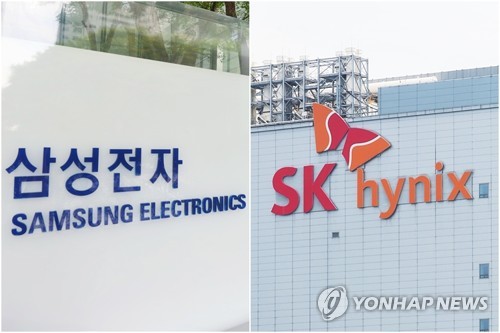(Seoul=Yonhap Infomax) Young Sook Yoon – The global semiconductor market is expected to enter a full-fledged supercycle in 2026, with unprecedented supply shortages anticipated worldwide.
As artificial intelligence (AI) infrastructure expands beyond niche applications to drive demand across all industries, limited production line expansions are expected to sustain upward price pressure throughout 2026.
According to the securities industry on the 25th, the memory price upcycle is set to accelerate this year.
Supply constraints initially triggered by server memory demand are spreading to general-purpose memory, with both DRAM and NAND prices projected to rise more than market expectations, according to analysts.

Memory: Rising Demand, Constrained Supply—Upward Price Pressure
Memory market demand is expected to benefit from a trickle-down effect as data expansion investments increase across the sector.
Kim Hyung-tae, Senior Researcher at Shinhan Investment Corp., said, "Next year, AI-driven memory demand growth will continue," adding, "Meanwhile, DRAM supply is expected to decrease by 1.4% compared to demand."
He noted that even if DRAM suppliers ramp up capital expenditures next year, rapid capacity expansion will be limited, justifying inventory build-up and price hikes.
Park Yu-ak, Analyst at Kiwoom Securities, forecast a -3% supply surplus rate for the DRAM industry next year, indicating that supply will not keep pace with AI-centric downstream demand.
Specifically, demand for HBM (High Bandwidth Memory) for AI-specific ASIC chips and DRAM for AI servers is expected to rise 18% year-on-year, while supply is projected to increase only 16% due to space constraints and the transition to HBM4 processes.
AI Market Expansion Drives Surge in Server and Accelerator Demand
Upstream industries, particularly servers, are expected to see significant demand growth.
According to Son In-jun, Analyst at Heungkuk Securities, DRAM demand is set to rise about 24% next year, with server shipments up roughly 10%. General server shipments are expected to increase by 8%, while AI server shipments could jump 24%.
The expansion of AI inference services is boosting demand not only for GPU-based AI servers but also for general servers.
Kim Hyung-tae of Shinhan Investment Corp. also highlighted that, despite record server investments by big tech cloud providers over the past three years, computing power remains insufficient, especially as profitability improves.
AI accelerator production is expected to rise by about 40% next year, with HBM demand estimated to account for 10% of total DRAM demand. However, supply constraints are likely to maintain a price premium structure.

HBM Demand Surges—Market Set for 41% Growth
With the spread of next-generation AI cloud strategies such as NeoCloud, demand for HBM for ASICs is expected to expand further next year.
In particular, from the end of this year, a generational shift to higher-end HBM versions is expected to accelerate, with AI training ASICs featuring, on average, double the HBM capacity of previous models.
According to Shinhan Investment Corp., the HBM market is projected to exceed $45 billion in 2025, surpassing a 30% revenue share within the total DRAM market. In 2026, the HBM market is forecast to reach $65 billion, a 41% increase, with revenue share stabilizing around 30% as general DRAM prices rise.
Demand for high-performance chips within the HBM market is expected to grow further.
DS Investment & Securities projects that next year, HBM3e and below will account for 57% of HBM products, while HBM4 will make up 43%, indicating a significant expansion of the HBM4 market share.
AI Integration in Smartphones; PC Demand Remains Limited
The smartphone market is expected to see modest growth next year, with DRAM demand for smartphones projected to rise by double digits.
Notably, as major flagship models have increasingly adopted AI features in recent years, demand for high-performance memory is expected to be driven further.
Market research firms estimate that the average price of mobile DRAM will decline by about 1.6% per bit next year.
However, as DRAM capacity per smartphone increases, mobile DRAM demand is expected to show a gradual upward trend.
PC market shipment growth is likely to remain limited.
While replacement demand may persist due to the end of Windows 10 support, macroeconomic uncertainties such as tariff policies are expected to cap demand growth.
Son In-jun of Heungkuk Securities said, "The PC industry is most vulnerable to a slowdown in sales volume due to rising average selling prices (ASP) from DRAM price increases," adding, "The PC sector's share of the DRAM market has been steadily declining due to long-term shipment decreases and low content growth, and is expected to fall below 10% for the first time next year, to the 8% range."

NAND Demand to Rise 20%—eSSD Transition Accelerates
NAND demand is being driven by increased eSSD demand from data centers, which is fueling price gains.
Despite rising storage needs from big tech firms, HDD supply remains insufficient, prompting a shift toward eSSD.
Kim Hyung-tae of Shinhan Investment Corp. said, "With extended HDD lead times, data center operators are rushing to place eSSD orders," adding, "In the medium term, the proportion of high-capacity QLC SSDs per rack will increase to maximize limited infrastructure space."
He added, "Given HDD makers' reluctance to expand capacity, the eSSD market is expected to remain strong throughout next year."
As a result, eSSD shipments are projected to rise about 10% next year, with demand outpacing supply by 5.1%, supporting firm pricing.
Son In-jun of Heungkuk Securities also forecast that NAND demand will increase by about 22% next year, with eSSD demand surging 36% this year and 56% next year, leading overall NAND market demand.
Ultimately, the securities industry expects explosive demand growth centered on servers and HBM, combined with physical capacity constraints, to drive strong price momentum across all memory product categories in the semiconductor market next year.
ysyoon@yna.co.kr
(End)
Copyright © Yonhap Infomax Unauthorized reproduction and redistribution prohibited.

